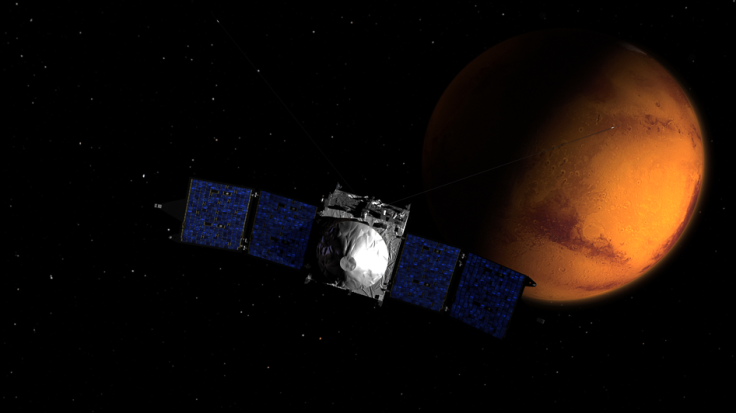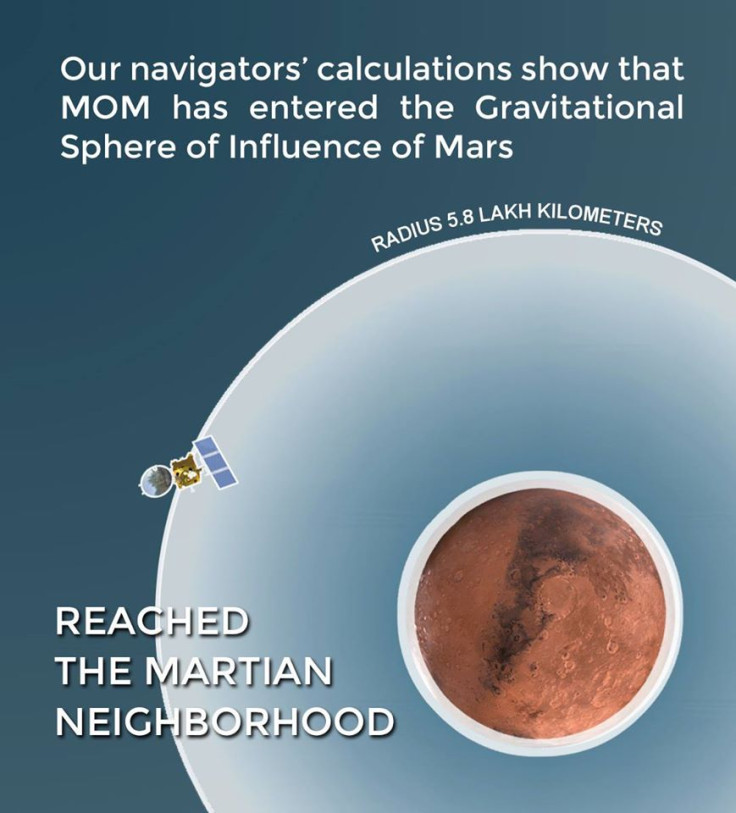Nasa's Maven In Mars Orbit While India's MOM Enters Planet's Gravitational Sphere Of Influence

After a ten-month journey across 711 million kilometres, Nasa's Mars Atmosphere and Volatile Evolution (Maven) spacecraft successfully entered Mars orbit, according to a Nasa press release.
Following close on Maven's heels is India's low-budget Mars Orbiter Mission which has just entered the gravitational sphere of influence of Mars, according to the Facebook account of the Indian space agency.
A crucial test firing of the main engine for a few seconds later in the day will reveal more on the health of the craft as the team readies it for orbit insertion on Wednesday.

Maven, meanwhile, will now prepare to study the Red Planet's upper atmosphere, taking measurements of the composition, structure and escape of gases in the planet's upper atmosphere and its interaction with the sun and solar winds.
"As the first orbiter dedicated to studying Mars' upper atmosphere, Maven will greatly improve our understanding of the history of the Martian atmosphere, how the climate has changed over time, and how that has influenced the evolution of the surface and the potential habitability of the planet," said Nasa Administrator Charles Bolden.
"It also will better inform a future mission to send humans to the Red Planet in the 2030s."
Maven was launched on 18 November, 2013, from the Cape Canaveral Air Force Station in Florida, carrying three instrument packages.
Confirmation of successful orbit insertion was received from Maven data observed at the Lockheed Martin operations centre in Littleton, Colorado, as well as from tracking data monitored at Nasa's Jet Propulsion Laboratory (JPL) navigation facility in Pasadena, California.
The telemetry and tracking data were received by Nasa's Deep Space Network antenna station in Canberra, Australia.
© Copyright IBTimes 2025. All rights reserved.





















